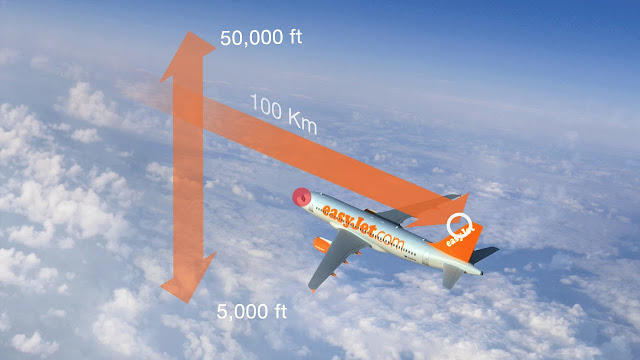Well, easyJet have been busy of late, and they’ve come up with a new technology for Volanic Ash called “AVOID” (Airborne Volcanic Object Identifier and Detector), developed by Dr Fred Prata of the Norwegian Institute for Air Research (NILU) – or in real terms – a Radar for Volcanic Ash.
By placing infrared tech and sensors on an aircraft, that will send images to pilots and an airline’s flight control centre, in theory, these images will enable pilots to see an ash cloud up to 100 km ahead of the aircraft and at altitudes between 5,000ft and 50,000ft, allowing pilots adjust flight paths as needed to avoid ash clouds.
Image: easyJet
Meanwhile at the control centre information from aircraft with this technology would be used to build an accurate image of the volcanic ash cloud using real time data, in theory opening up airspace that might had been closed, and thus avoiding distruption.
Of course, easyJet are cockahoot about this.
“This pioneering technology is the silver bullet that will make large-scale ash disruption history. The ash detector will enable our aircraft to see and avoid the ash cloud, just like airborne weather radars and weather maps make thunderstorms visible.”
The CAA air slightly more cautious, welcoming the news, whilst not endorsing it.
“It is essential that the aviation community works together to develop solutions to minimise disruption, should ash return. The CAA welcomes the fact that airlines are considering innovations such as this and we will do all we can to facilitate them.”
So you’re expecting easyJet to donate a spare A319 so they test to their hearts content. Of course not! Bring in the hired help – in the form of an A340 operated by Airbus, with a rapid deployment if the tests goes well.
This project is setting back EasyJet at least £1million to start off with, with low material costs to deploy – but in a refreshing change, will share the information with rivals. To quote:
“What we don’t want to do is to gain a commercial advantage over other airlines so we can fly and they can’t. We are not going to exclude people from this technology.”
Of course, they didn’t say how much they’d share the the knowledge for.
Well – it’s a good idea – but as usual, practical implementation and results will tell us how good the technology is…
